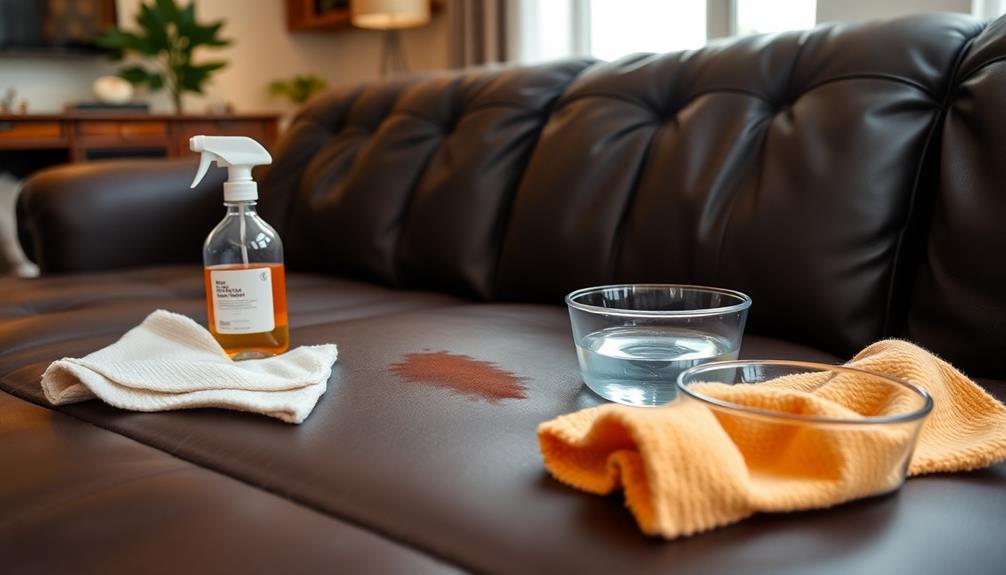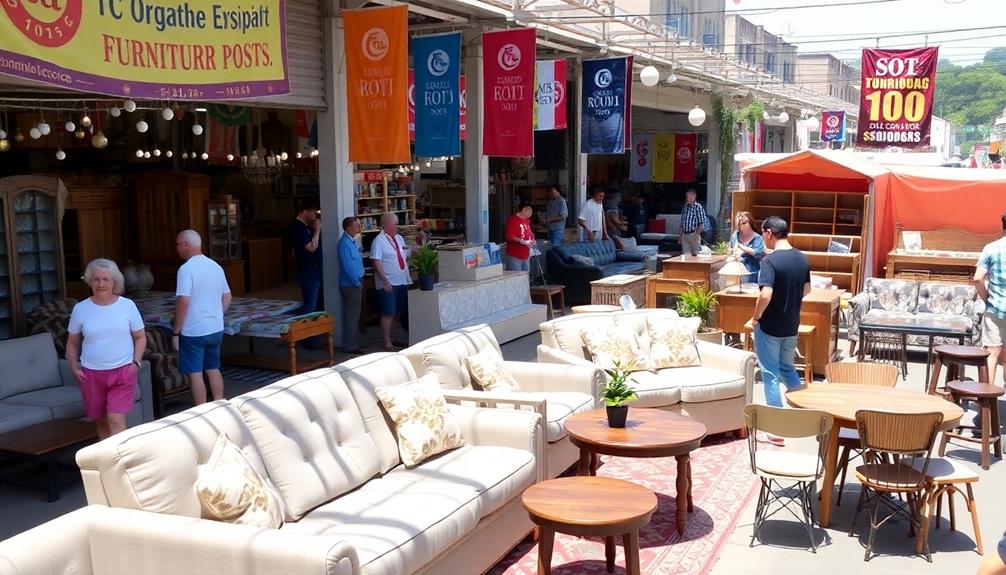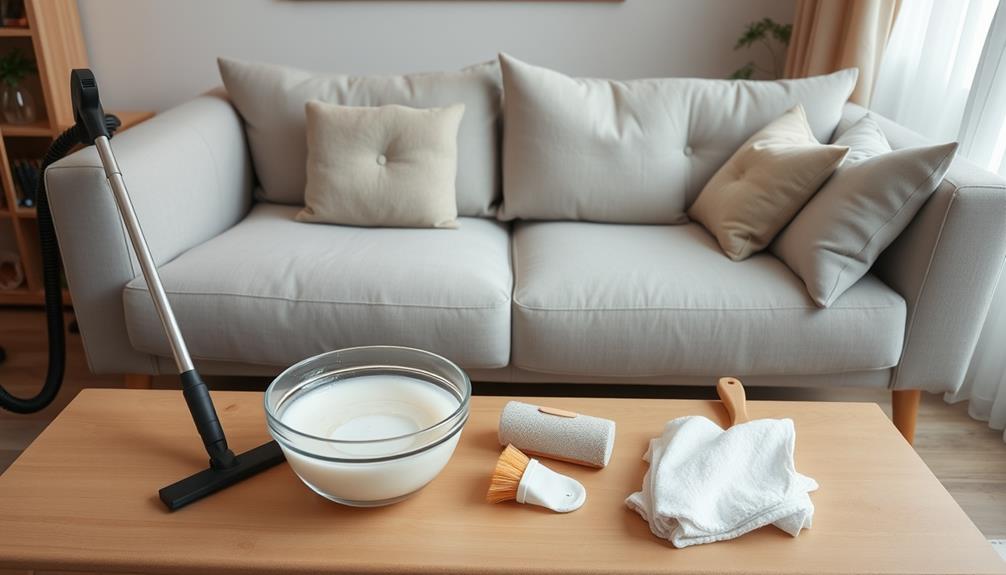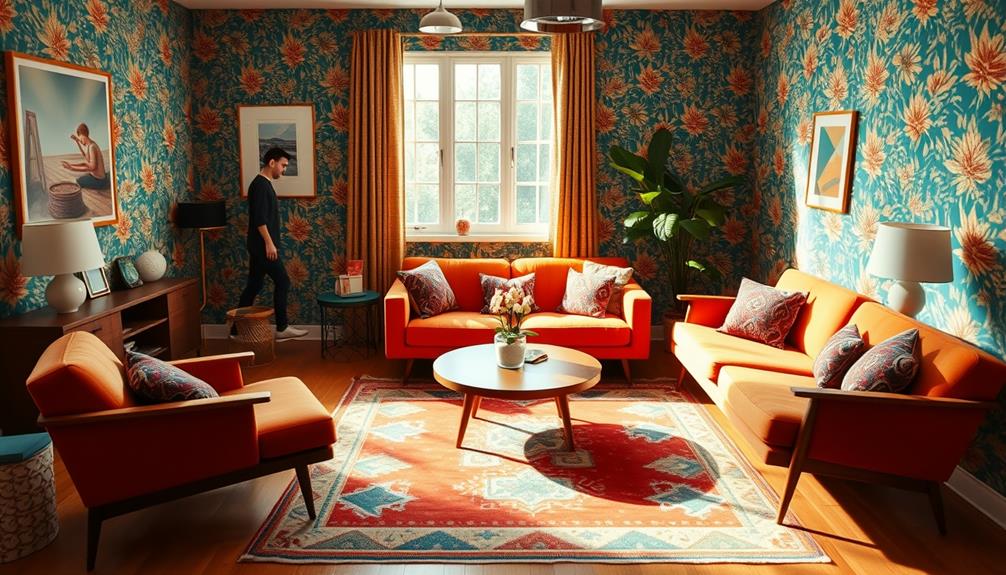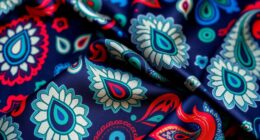To effectively get rid of stains on your leather sofa, it is important to act quickly! Begin by using a dry microfiber cloth to blot spills and absorb any excess liquid without rubbing. In case of grease stains, sprinkle cornstarch over the affected area and allow it to sit overnight. For ink stains, gently dab with rubbing alcohol after testing it on a hidden spot first. Following the cleaning process, remember to apply a leather conditioner to maintain the softness of the sofa. It is crucial to consider your leather type, whether it is aniline-dyed or pigmented, when choosing the appropriate cleaning method. More helpful tips on maintaining your sofa’s appearance can be found below. To prevent future stains, establish a regular cleaning routine using a gentle leather cleaner suitable for your sofa type. Avoid using harsh chemicals or abrasive cloths as they can cause damage to the material. By following these steps, you will be able to effectively remove stains from leather sofa surfaces and extend their lifespan. Find more information on how to remove stains from a white leather sofa by visiting this link.
Key Takeaways
- Blot stains immediately with a dry microfiber cloth to absorb excess liquid without rubbing, preventing further damage.
- Test any cleaning solutions on a discreet area of the leather to ensure no discoloration occurs.
- For grease stains, sprinkle cornstarch over the area and let it sit overnight before wiping it away.
- Use rubbing alcohol on a clean cloth for ink stains, blotting gently from the outside in without rubbing.
- Apply leather conditioner after stain removal to restore moisture and maintain the leather's suppleness.
Understanding Leather Types
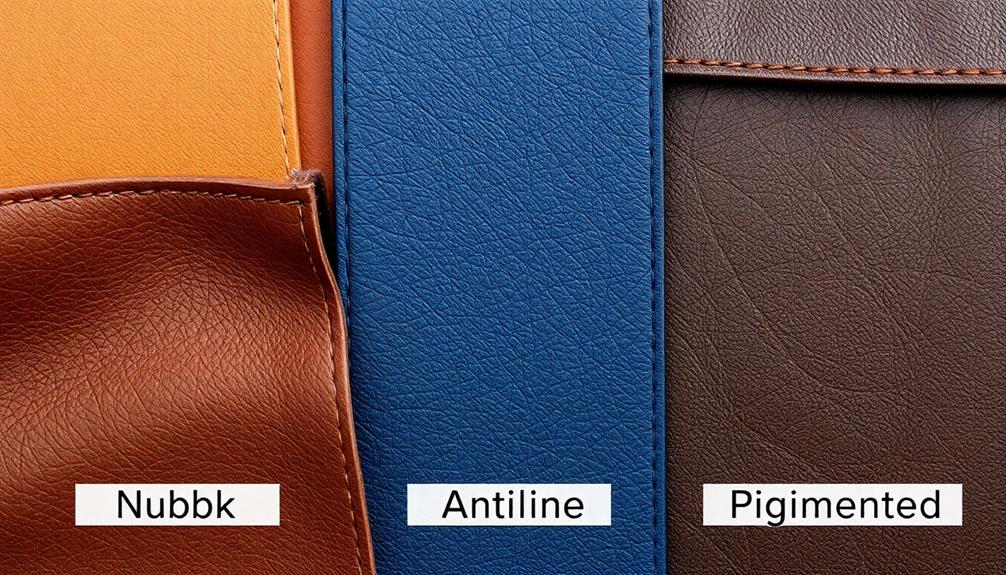
When it comes to caring for your leather sofa, understanding the different types of leather is fundamental. You've got two main categories: aniline-dyed leather and pigmented leather.
Aniline-dyed leather has an unfinished surface, giving it a natural look and rich color. However, it's more susceptible to stains and requires careful cleaning. In contrast, pigmented leather is designed for durability and ease of maintenance, making it a popular choice for families and pet owners, especially with best vacuums for dust removal in 2024 that can help maintain a clean environment.
Each leather type has specific cleaning requirements. For instance, if you spill something on aniline-dyed leather, you often need professional help to treat the stain. Pigmented leather, however, can usually be cleaned with mild soap and water. Understanding these differences is critical; improper care can lead to irreparable damage, especially with delicate aniline-dyed leather.
Regular maintenance and conditioning are essential for both types. While pigmented leather generally needs less frequent care, aniline-dyed leather requires more attention to keep its appearance intact.
General Stain Removal Guidelines
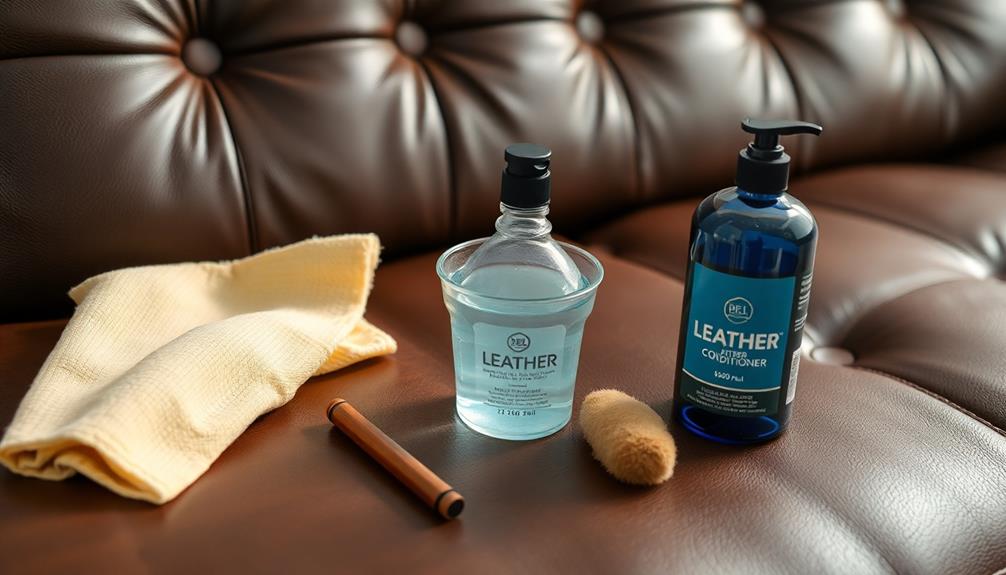
Knowing how to handle stains on your leather sofa can make all the difference in maintaining its beauty. Immediate action is essential, so always keep a clean cloth handy to quickly blot spills. This prevents stains from setting in. Before you attempt to remove stains, test any cleaning solution on an inconspicuous area of the leather. This helps avoid discoloration or damage.
For effective stain removal, tailor your cleaning methods to the stain type. Here are some useful cleaning tips:
| Stain Type | Recommended Solution |
|---|---|
| Grease | Cornstarch to absorb the stain |
| Ink | Rubbing alcohol on a clean cloth |
| Food | Mild soap mixed with water to create |
| General Dirt | Vinegar-water solution |
Regular maintenance is also key; apply leather conditioner every 6-12 months to keep your leather supple, making future cleaning easier. Always avoid harsh chemicals like bleach or alcohol-based products, as they can irreversibly damage leather fibers. With these guidelines, you can effectively remove stains and preserve your leather sofa's elegance.
Cleaning Aniline-Dyed Leather
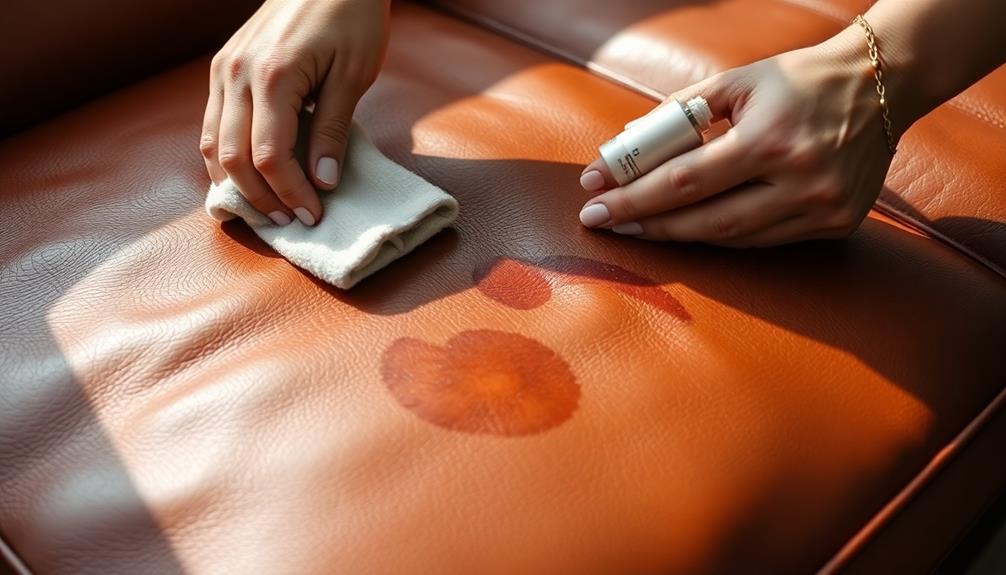
Cleaning aniline-dyed leather requires a gentle touch, as its natural, unfinished surface makes it more vulnerable to stains and damage.
To effectively remove stains from your leather sofa, it's essential to act quickly and use safe-to-use products. Always consult the manufacturer's guidelines for specific care instructions tailored to your sofa.
Proper budgeting techniques can also help you allocate funds for professional cleaning if needed.
Here are some tips to help you:
- Use a soft, damp cloth for gentle cleaning.
- Avoid harsh chemicals that could discolor or damage the leather.
- Condition leather regularly to maintain its softness and rich color.
- Seek specialized treatments for specific stains like grease or ink.
- Consider professional assistance for tough stains to protect your leather.
Water Stain Removal Techniques
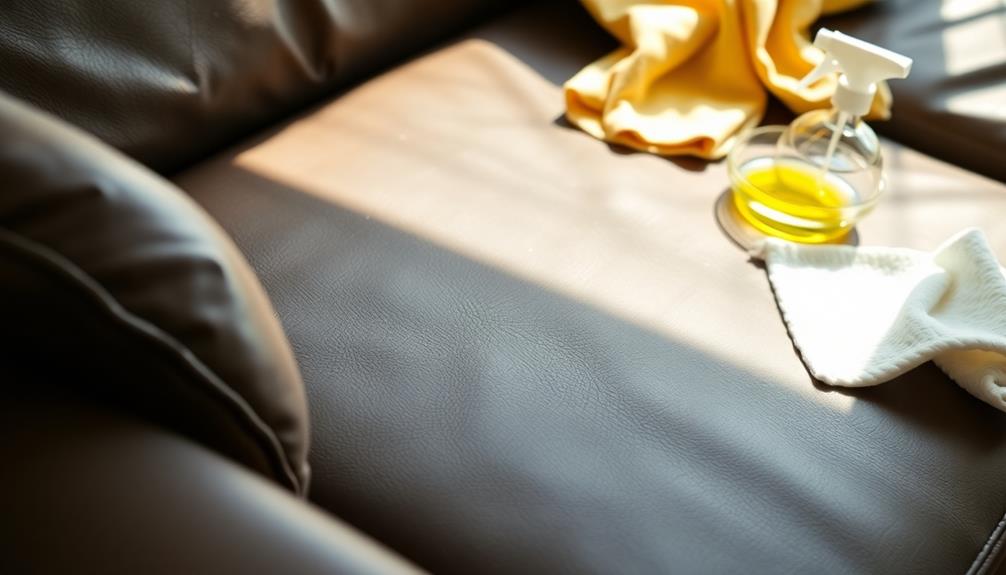
Water stains on your leather sofa can be unsightly, but with the right techniques, you can effectively remove them. Start by using a dry microfiber cloth to soak up any spills immediately. This helps prevent the stain from setting.
To further enhance your cleaning routine, consider incorporating natural remedies like essential oils for cleaning, which can provide antimicrobial benefits. Next, prepare a solution of distilled water and a leather conditioner.
Take a damp cloth, dip it into the solution, and apply it gently to the stained area. Use circular motions, starting from the center of the stain and working your way outwards. This method helps to clean the area without spreading the stain further.
After cleaning, allow the leather surface to dry naturally. Sometimes, drying can actually improve the appearance of the stain. If the stain remains stubborn, don't worry; multiple applications of this cleaning technique may be necessary to completely remove the discoloration.
Always refer to your manufacturer's care instructions for specific guidance tailored to your leather type before attempting any cleaning method. By following these steps, you'll not only clean your leather sofa but also maintain its beauty and longevity.
Grease Stain Cleaning Methods
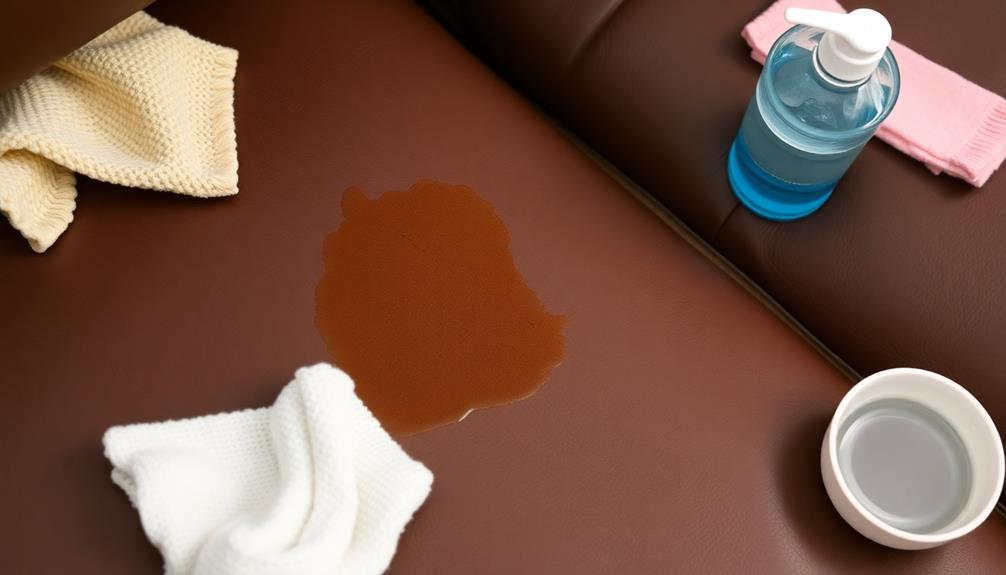
When you notice a grease stain on your leather sofa, start by blotting it with a dry microfiber cloth to soak up excess grease.
It's also wise to guarantee that your cleaning process doesn't involve harsh chemicals that might damage the leather, much like maintaining your air purifiers by avoiding harsh chemicals that may damage the purifier.
Next, sprinkle an absorbent powder like cornstarch or talcum powder over the stain and let it sit overnight to draw out the remaining grease.
This two-step approach can effectively tackle those stubborn marks before they set in.
Initial Blotting Technique
Dealing with a grease stain on your leather sofa can be frustrating, but the initial blotting technique is your best first step. Start by grabbing a dry microfiber cloth and gently blot the grease stain. This action will absorb as much grease as possible without rubbing it in further, which can worsen the stain.
Additionally, for maintaining the overall appearance of your leather furniture, consider using a vacuum cleaner designed for upholstery, such as those from BISSELL's pet hair removal features.
After you've blotted the area, sprinkle an absorbent powder like cornstarch or talcum powder over the stain. Let it sit overnight to draw out the grease effectively. The following day, use a clean cloth to gently wipe away the powder, revealing the treated area.
Here are some quick tips to keep in mind:
- Always act quickly to prevent the stain from setting.
- Avoid scrubbing; blotting is key to effective cleaning.
- Confirm the cloth you use is dry and clean.
- Consider using a leather conditioner afterward to restore moisture.
- If the stain persists, don't hesitate to seek professional help.
Absorbent Powder Application
Applying absorbent powder is an essential step in tackling grease stains on your leather sofa. Start by blotting the stained area with a dry microfiber cloth to absorb excess grease without rubbing it in, as this can spread the stain. Regular maintenance of your upholstery can help prevent such stains from setting in, similar to how preventive maintenance can extend appliance lifespan.
Next, sprinkle a generous amount of cornstarch or talcum powder over the grease stains and let it sit overnight. This absorbent powder application allows the powder to effectively draw out the grease.
The following day, gently wipe away the powder with a clean cloth, ensuring no residue remains on the leather surface. If any grease remains, mix a mild dish soap with water and apply it to the pigmented leather using a soft cloth, carefully working in small sections. Rinse the cloth and wipe the area again to remove any soap residue.
Once you've successfully removed the stain, don't forget to apply a leather conditioner to restore moisture and sheen to the affected area. This step is vital, as it helps maintain the integrity of your leather and prevents future damage.
Ink Stain Removal Process
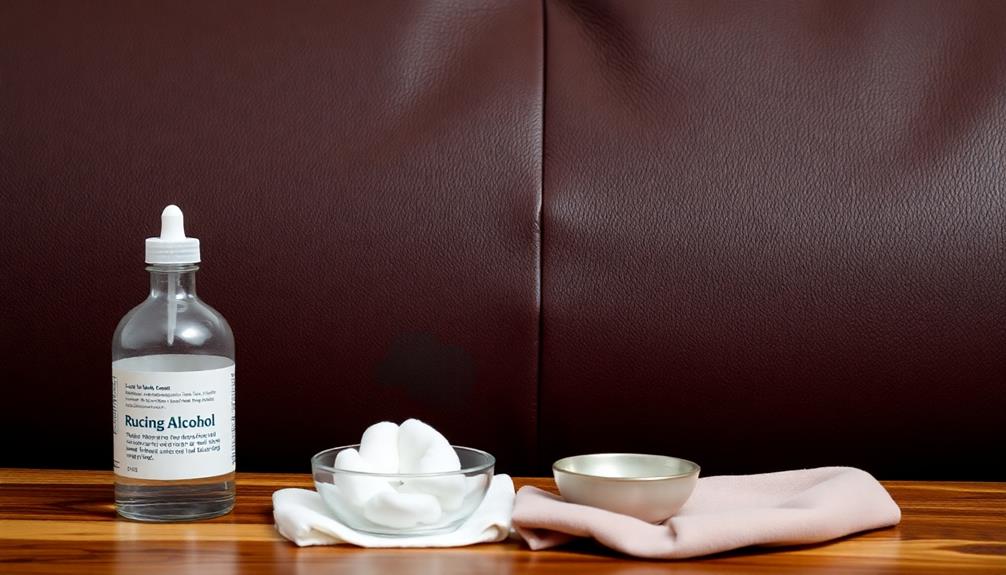
When you notice an ink stain on your leather sofa, acting quickly is key.
It's important to select the right cleaning method to avoid damaging the leather, much like choosing the right cold medication for effective relief cold medications overview.
You'll need the right ink removal tools and a clear set of treatment steps to tackle the stain effectively.
Let's go over the best methods to restore your leather's beauty.
Ink Removal Tools
To effectively tackle ink stains on your leather sofa, having the right tools at your disposal is crucial. Using the correct items guarantees that you can perform stain removal while preserving the leather's quality.
Additionally, it's important to be gentle throughout the process to avoid causing any further damage to the leather. Incorporating techniques from practices like yoga can also enhance your overall approach to maintenance and care, as yoga for back pain emphasizes mindfulness and patience.
Here's a list of tools to gather for this process:
- Ink-removal stick: Specifically designed for leather, it helps tackle ink stains without damage.
- Rubbing alcohol: For application, use a cotton swab soaked in rubbing alcohol to gently dab the stain from the outside in.
- Soft brush: After stain removal, this can help clean the entire surface of your sofa.
- Blow dryer: Use it on a low setting to help evaporate moisture after applying rubbing alcohol.
- Leather conditioner: Always apply this afterward to restore moisture and maintain the leather's suppleness.
Treatment Steps Overview
Removing ink stains from your leather sofa requires a methodical approach to guarantee effective treatment without causing damage. Start by addressing the stain promptly; timely treatment is vital to preserving the leather's appearance.
First, take a clean cloth and gently blot the wet ink to absorb as much excess ink as possible. Avoid rubbing, as this can spread the stain further. Additionally, using a well-draining soil mix can help in maintaining the overall health of your indoor plants, ensuring a pleasant environment around your furniture.
Next, invest in an ink-removal stick specifically designed for leather. Apply it according to the package directions, ensuring you cover the stained area thoroughly.
After using the ink-removal stick, it's important to follow up with a leather conditioner. This cleaner and conditioner will restore moisture and maintain the leather's appearance, preventing it from drying out or cracking.
To minimize future risks, implement preventive measures by keeping pens and similar items away from the sofa. By being proactive, you can greatly reduce the chances of ink stains occurring in the first place.
Essential Cleaning Tools
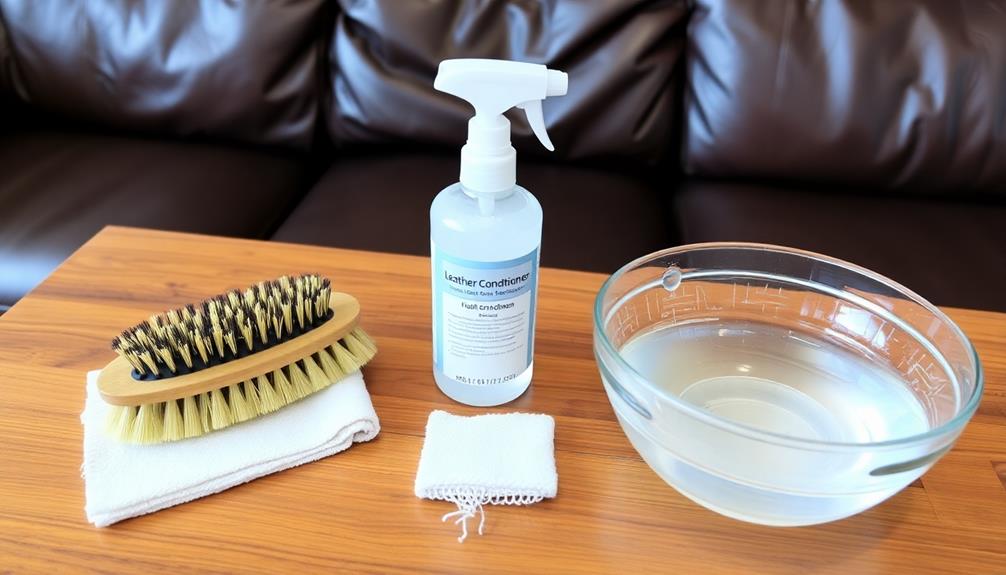
Having the right cleaning tools on hand can make all the difference when tackling stains on your leather sofa.
It's important to confirm that the products you choose are safe for leather to avoid any potential damage, similar to how proper care is essential in hamster care.
You'll want to gather a few essential items to guarantee effective cleaning without damaging the leather.
Here's a handy list to help you get started:
- Vacuum cleaner: To remove loose dirt and debris.
- Microfiber cloths: For gentle cleaning without scratching the surface.
- Leather cleaner: Specifically formulated for your type of leather to guarantee safe cleaning.
- Absorbent powders: Such as cornstarch or talcum powder, to tackle grease stains by absorbing excess oil before you clean further.
- Leather conditioner: To restore moisture and maintain the leather's suppleness after stain removal.
Don't forget to wear protective gear like latex gloves and a face mask while handling cleaning products, especially if they contain chemicals.
You'll also find a spoon or a blunt knife useful for gently scraping off any dried residues without causing damage.
Equipped with these tools, you'll be well-prepared to address any stains on your leather sofa efficiently.
Preventive Care Tips
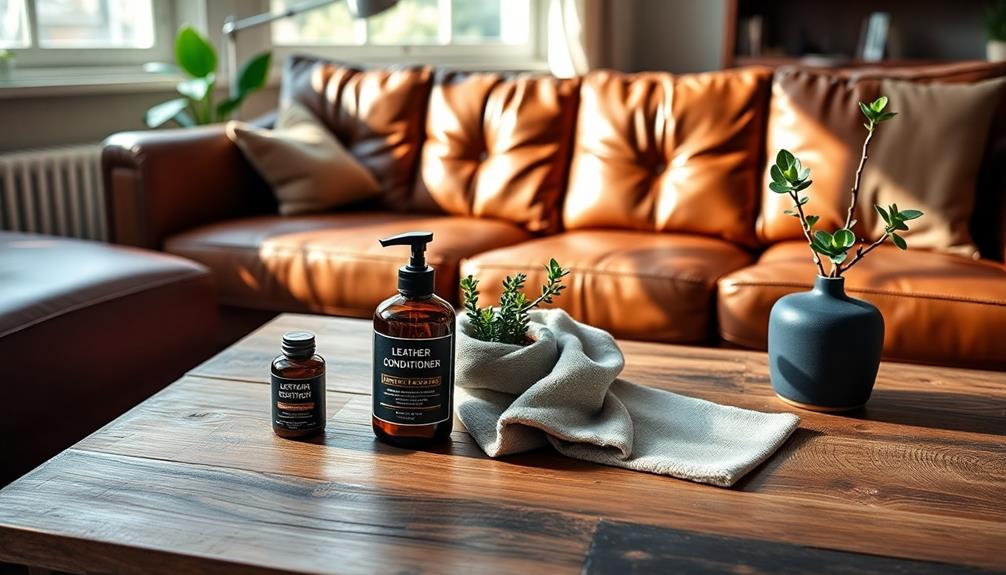
Since prevention is often easier than dealing with stains after they occur, implementing a few simple care tips can keep your leather sofa looking pristine.
Start by regularly dusting and wiping down your sofa with a soft cloth. This simple task prevents dirt buildup that can lead to stains. Every 6-12 months, apply a leather conditioner to maintain the leather's suppleness and create a barrier against spills. In the case of small scratches or scuffs, gently buff the affected areas with a microfiber cloth or specialized leather balm to restore the sofa’s appearance. For more significant damage, consider seeking professional help for repairing a leather sofa to ensure a seamless finish. Regular maintenance will not only lengthen the lifespan of your sofa but also make future tasks, like cleaning and repairing a leather sofa, much more manageable.
It's essential to keep your leather furniture away from direct sunlight and heat sources. These can cause fading and drying, making it more susceptible to staining.
To further protect your sofa from accidental spills, use coasters and placemats when enjoying food and drinks.
If a spill does happen, act quickly! Immediately blot spills with a dry microfiber cloth to absorb liquids before they penetrate the leather surface.
By following these preventive care tips, you'll not only enhance the longevity of your leather sofa but also keep it looking stunning for years to come.
Frequently Asked Questions
How Do I Get Stains Out of a Leather Couch?
To get stains out of a leather couch, quickly blot the area dry, then use appropriate cleaners for specific stains. Always test solutions first, and condition the leather afterward to maintain its quality and appearance.
What Is the Best Stain Remover for Leather?
The best stain remover for leather's specifically formulated to tackle various stains without damaging the material. Look for pH-balanced ingredients and verify it's compatible with your leather type for effective and safe results.
Do Stains Come Out of Leather?
You'll find that leather can often regain its charm, but don't let stains linger. Address them quickly, and with the right techniques, you can restore its elegance while ensuring it remains in great condition.
Does Vinegar Remove Stains From Leather?
Yes, vinegar can remove stains from leather. Just mix equal parts vinegar and water, dampen a microfiber cloth, and gently wipe the stain. Always spot test first to avoid potential discoloration or damage.
Conclusion
In the battle against stains on your leather sofa, knowledge is your strongest ally. By understanding your leather type and using the right techniques, you can restore your sofa's beauty and keep it looking new. Remember, a little preventive care goes a long way, helping you dodge future mishaps. With these tips, you'll transform your leather sofa from a stain magnet into a timeless piece that stands the test of time, just like a fine wine.
